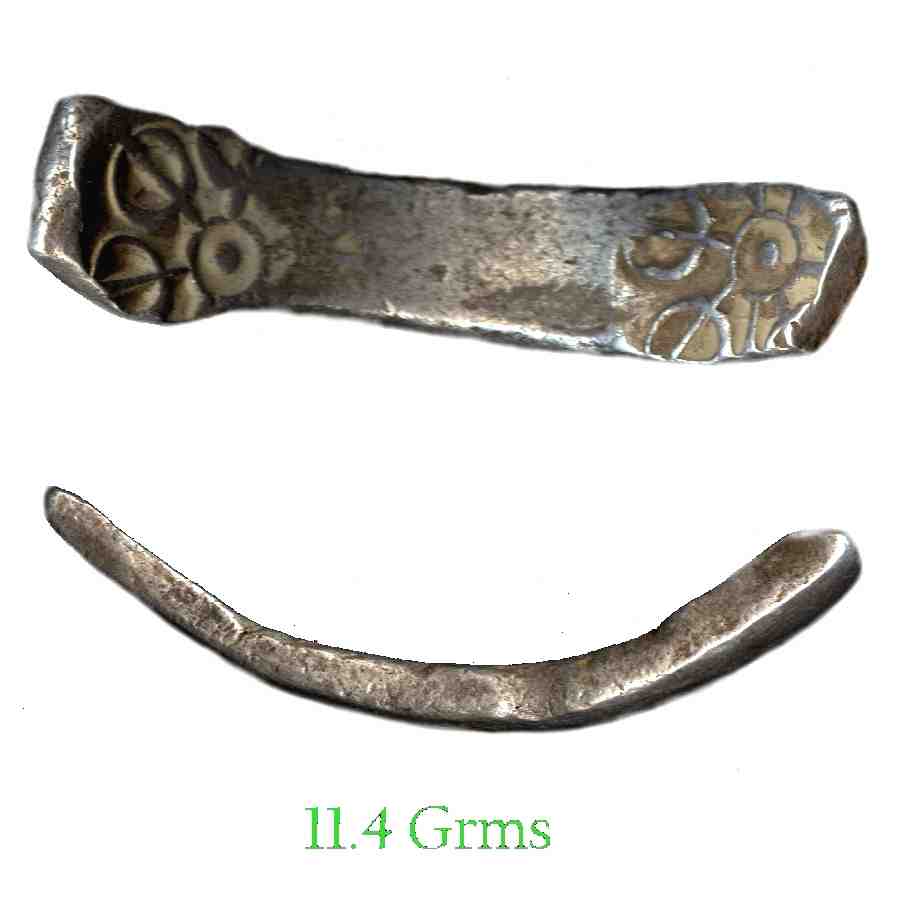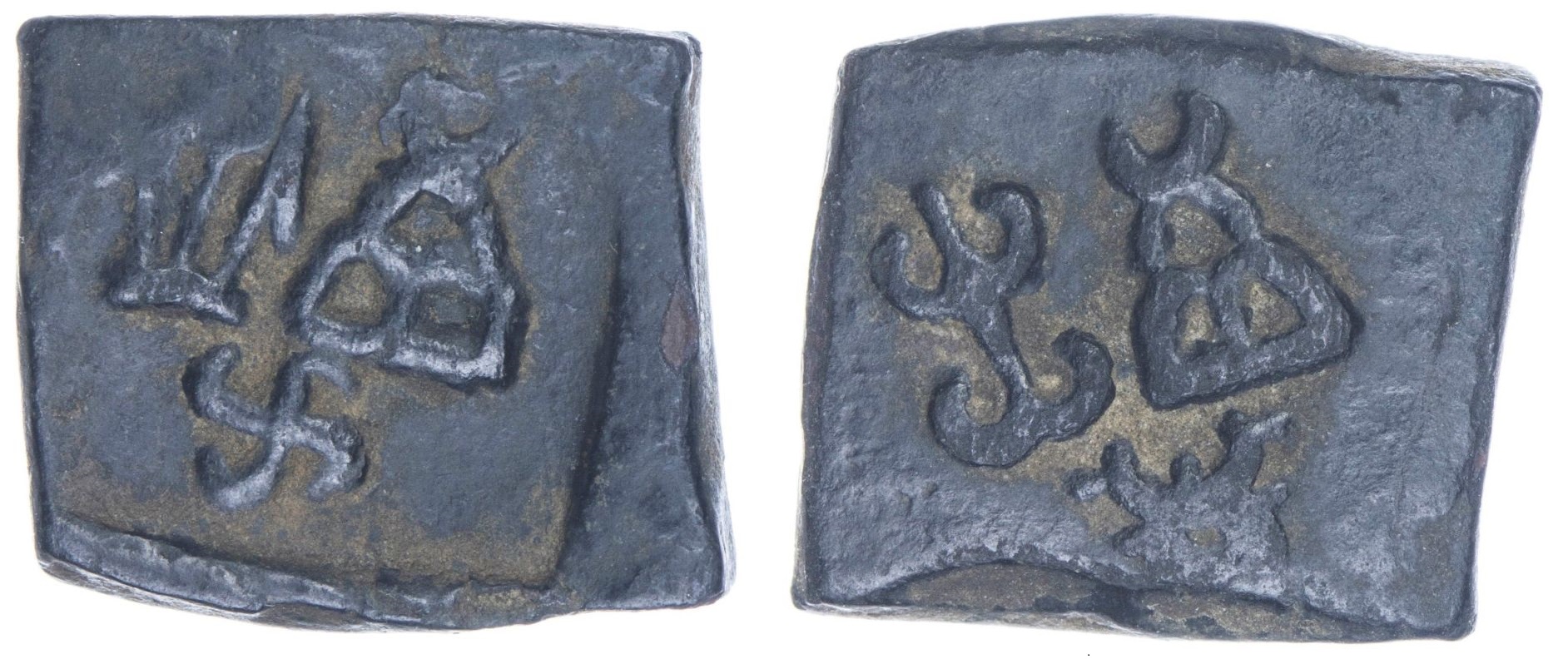 |
 |
| Taxila (Taksasila) | |||||
| An ancient city in northern Pakistan, the site is about 20 miles northwest of the present Pakistani capital of Islamabad. It was known for ages as a commercial center astride several important trade routes, and as a significant contact point for Indian, Iranian, Hellenistic, and even Chinese influences. | |||||
|
|||||
 |
Silver punch marked "bent bar"
Satamana. [Broad series] c. 6th cent. BC. West Indus
series.
Weight: 11.2g. Size: 5 x 11 x 28 mms. |
||||
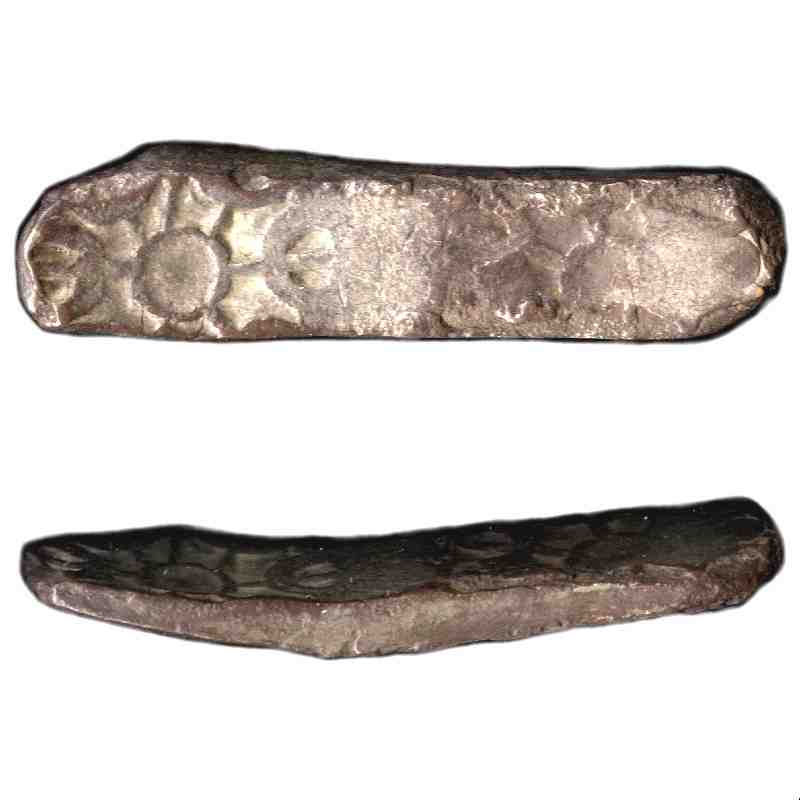 |
Silver punch marked "bent bar"
Satamana. [Narrow Series] Pre 350 BC.
Mint: Taxila.
Weight: 8.2g. Size: 3.5 x 10.0 x 40.5 mms. |
||||
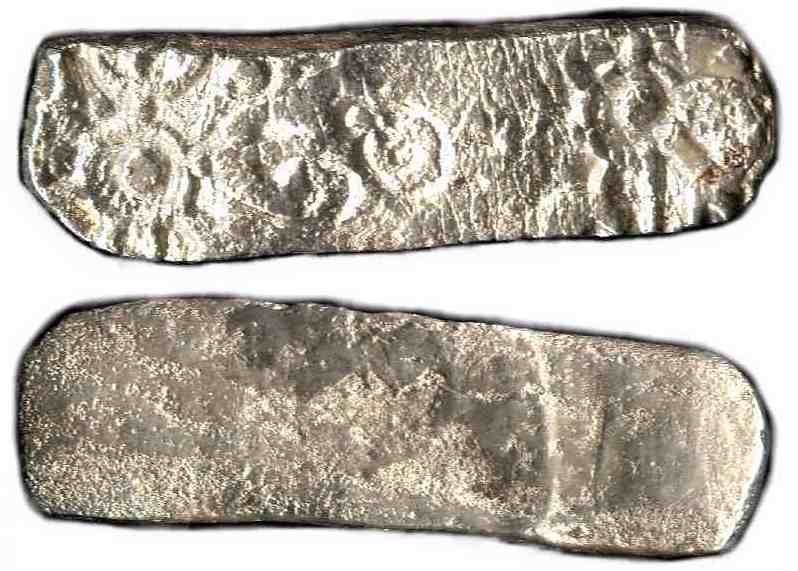 |
Silver Satamana.
Flat Bar [Narrow Series] Pre 350 BC.
Mint: Taxila, circular counter-mark also in middle. Weight: 8.2g. |
||||
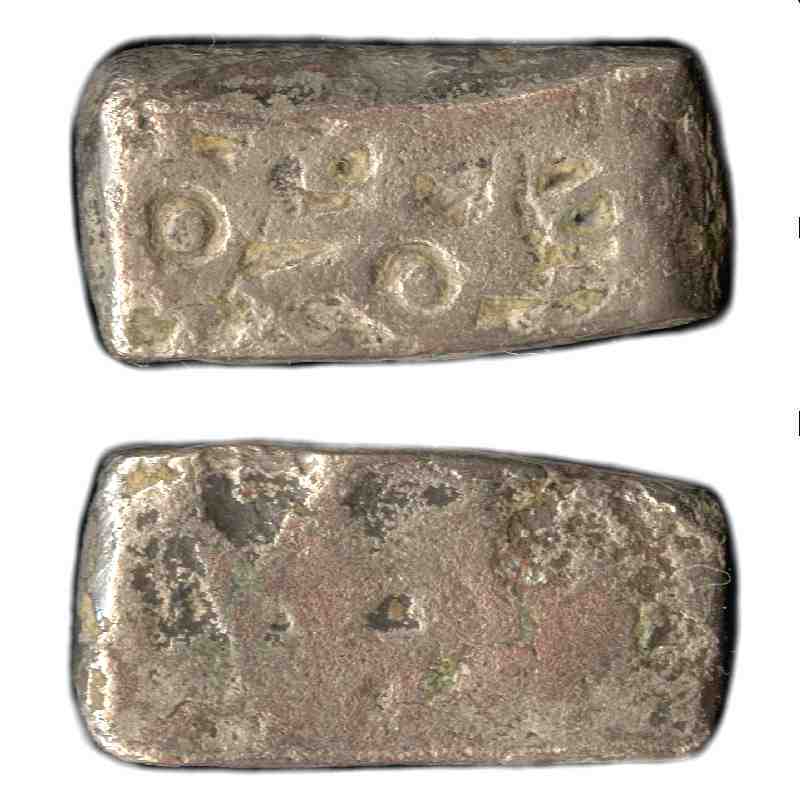 |
Silver Satamana. [Flat Bar, West Indus series (Indus and Kabul river)]. Substantial copper and other metals amalgamation. Found in North Attock. | ||||
|
|
Silver punchmarked "heavy bent bar"
Satamana.
[Broad Series]
discovered at Campbellpur (modern day Attock City) east of River
Indus.
Weight: 11.4g. |
||||
|
|||||
|
The Mauryan-Sunga empire shrank in the 2nd century BC, leaving the outlying
provinces to their own devices. Some of them were swallowed up by invaders
like the Greeks. Actually all of them fell to this or that conqueror
eventually. But some managed to hold on and run their affairs on their own
for a time. Pushkalavati (west of Charsadda), for example, was run by its
commercial guilds (modern term: "banks") for a while. These entities struck
a series of municipal copper coins that became the model for the square
Greek bronzes after those guys conquered the region. Exactly which city
issued which coins is a subject of debate. The elephant/lion and
elephant/horse coins, for example are assigned to Pushkalavati by Mitchiner
and to Taxila by Senior. The elephant/lion coins form a coherent series, the details of which are at this time are not elucidated. The weight of the basic coins are 14 grams or so, called "1 1/2 karshapana" by Mitchiner. Fractions of various kinds are rare, meaning less than 1 of 100 found. They are found with both or either animal facing left or right. The animals facing oppositely are far more common than both facing the same way. The directions probably indicate a sequence or "something," but how the system worked is completely unknown, possibly unconsidered. Pushkalavati (Pashto and Urdu: پُشْكَلآوَتي) was the capital of the Gandhara kingdom. Pushkalavati (meaning Lotus City in Sanskrit) and home of the Sanskrit grammarian Pāṇini. Its ruins are located on the outskirts of the modern city of Charsadda, in the Khyber Pakhtunkhwa province of Pakistan. Charsadda lies about 29 kilometres (18 miles) east from the provincial capital of Peshawar. Pushkalavati ruins are located on the banks of Swat River, near its junction with Kabul River. Pushkalavati was the capital of the ancient Gandhara kingdom before the 6th century BCE, when it became an Achaemenid regional capital, and it remained an important city until the 2nd century CE. The region around ancient Pushkulavati was recorded in the Zoroastrian Zend Avesta as Vaēkərəta (Gandhara), or the seventh most beautiful place out of a list of sixteen districts on earth created by Ahura Mazda. It was known as the "crown jewel" of Bactria, and held sway over nearby ancient Taxila. |
|||||
|
|||||
|
|
|||||
| Pakistan's province of Punjab. | |||||
| Countries / Territories | |||||
| Chiefa Coins | |||||
